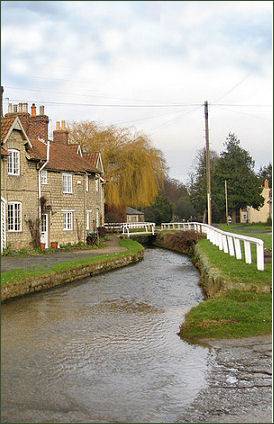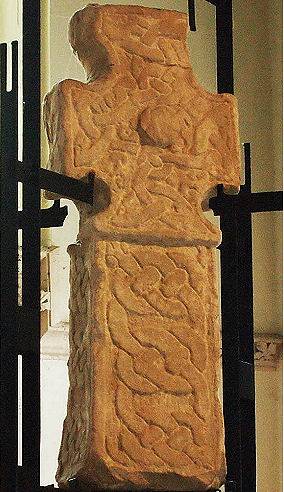Hovingham
OS grid reference:- SE 667 528
 The large, picturesque village of Hovingham is situated in the Ryedale district of North Yorkshire, some 19 miles to the north of the city of York and lies on the edge of the Howardian Hills Area of Outstanding Natural Beauty.
The large, picturesque village of Hovingham is situated in the Ryedale district of North Yorkshire, some 19 miles to the north of the city of York and lies on the edge of the Howardian Hills Area of Outstanding Natural Beauty.
Hovingham is recorded in the Domesday Survey of 1086, prior to the Norman conquest it belonged to Orm, son of Gamal. After the conquest, Hovingham was granted to Hugh, son of Baldric. The village's name drives from the Anglo-Saxon words houc meaning a place of graves, ing meaning a meadow near a river, and ham, a settlement.
During the construction of Hovingham Hall gardens, a Roman bath, tessalted pavement and other artefacts were discovered.
 Hovingham has been home to the Worsley family since 1563 and was the childhood home of Katherine Worsley, who married Prince Edward, Duke of Kent on 8 June 1961 at York Minster and became Duchess of Kent. The sixth Thomas Worsley (1710-1778) designed and built the present Hovingham Hall.
Hovingham has been home to the Worsley family since 1563 and was the childhood home of Katherine Worsley, who married Prince Edward, Duke of Kent on 8 June 1961 at York Minster and became Duchess of Kent. The sixth Thomas Worsley (1710-1778) designed and built the present Hovingham Hall.
The Worsley family descend from Sir Elias de Workesley, a Norman knight who accompanied Duke Robert II of Normandy, the eldest son of William the Conqueror, on the First Crusade.
A stream runs through the northern edge of the picturesque village, complete with a ford. The village has a shop, a bakery and tea room. Hovingham has two pubs, both situated on Main Street. The stone-built Malt Shovel Malt Shovel inn dates back to the eighteenth century and offers a friendly and traditional atmosphere with good-value food prepared from quality local ingredients. The Worsley Arms, is built in a late Georgian style, and has an excellent restaurant. Hovingham also has a cricket club and a tennis club.
The award winning Hovingham Market is held each month at the Village Hall, comprising of over 30 indoor and outdoor stalls promoting local produce.
All Saints Church, Hovingham
The village church is dedicated to All Saints. Much of the present building dates to 1860, when it was rebuilt by Rhode Hawkin at the expense of Marcus Worsley. The tower of the parish church of All Saints is one of the finest Saxon towers in the north of England, It is believed to date from the last 25 years before the Norman Conquest.
A wheel cross, positioned high on the south face of the tower, above a Saxon doorway with a simple, rounded archprobably dates to the tenth century, it is carved in Danish, it probably came from an earlier church on the site. A further cross is set into the west face of the tower, an Anglian cross in raised relief. It has four arms of equal length, a design common to the seventh century.
The church's altar cross is a free-standing carved cross which dates to the tenth century. This is known as the Viking Cross and still retains fragments of its coloured paint. One surface is intricately carved with knotted strapwork and two ribbon beasts. The ribbon beast design also appears on the sides of the cross. The Viking Cross was formerly built into the tower and was removed for preservation in 1925.
A sculptured stone acts as a reredos for the altar in the Lay Chapel. The stone is divided into eight round-headed panels, with figures in high relief. Above the panels are figures of doves while below is a panel of horizontal vine leaves. There are also several tombs to the Worsley family of Hovingham Hall.
